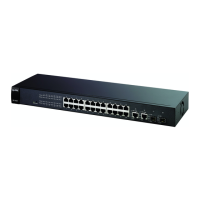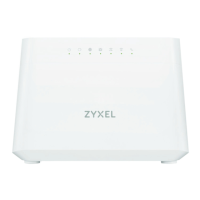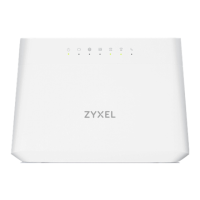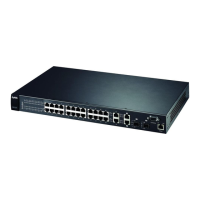Ethernet Switch CLI Reference Guide
249
CHAPTER 63
RMON
63.1 RMON Overview
Similar to SNMP, RMON (Remote Network Monitor) allows you to gather and monitor
network traffic.
Both SNMP and RMON use an agent, known as a probe, which are software processes
running on network devices to collect information about network traffic and store it in a local
MIB (Management Information Base). With SNMP, a network manager has to constantly poll
the agent to obtain MIB information. The probe on the Switch communicates with the network
manager via SNMP.
RMON groups contain detailed information about specific activities. The following table
describes the four RMON groups that your Switch supports.
63.2 User Input Values
This section lists the common term definition appears in this chapter.
Table 137 Supported RMON Groups
GROUP DESCRIPTION
Statistics Records current network traffic information on a specified Ethernet port.
History Records historical network traffic information on a specified Ethernet port for a
certain time period.
Alarm Provides alerts when configured alarm conditions are met.
Event Defines event generation and resulting actions to be taken based on an alarm.
Table 138 rmon command user input values
USER INPUT DESCRIPTION
event-index This is an event’s index number in the event table, between 1 and 65535.
alarm-index This is an alarm’s index number in the alarm table, between 1 and 65535.
etherstats-
index
This is an entry’s index number in the Ethernet statistics table, between 1 and
65535.
historycontro
l-index
This is an entry’s index number in the history control table, between 1 and 65535.
owner This is a person’s name who will handle the event, alarm, historycontrol, or
Ethernet statistics entry.
interface-id This is a port that the Switch will poll for data.

